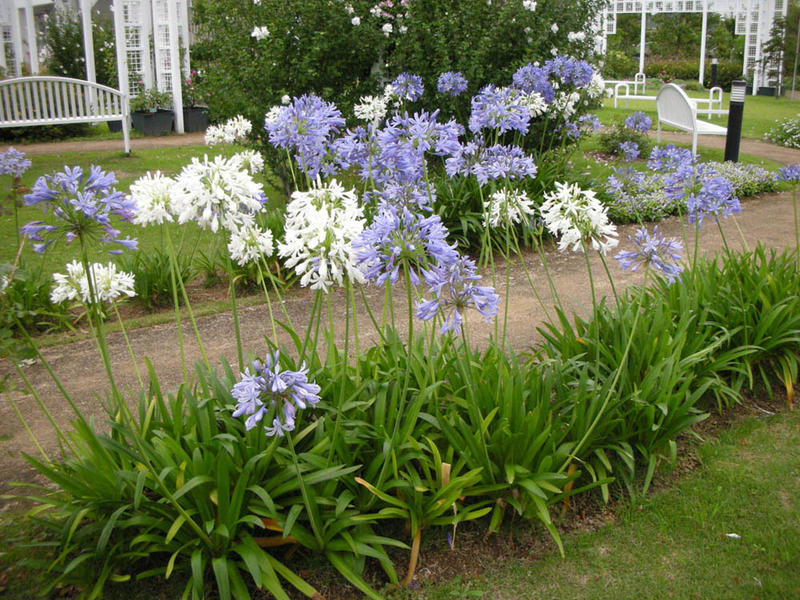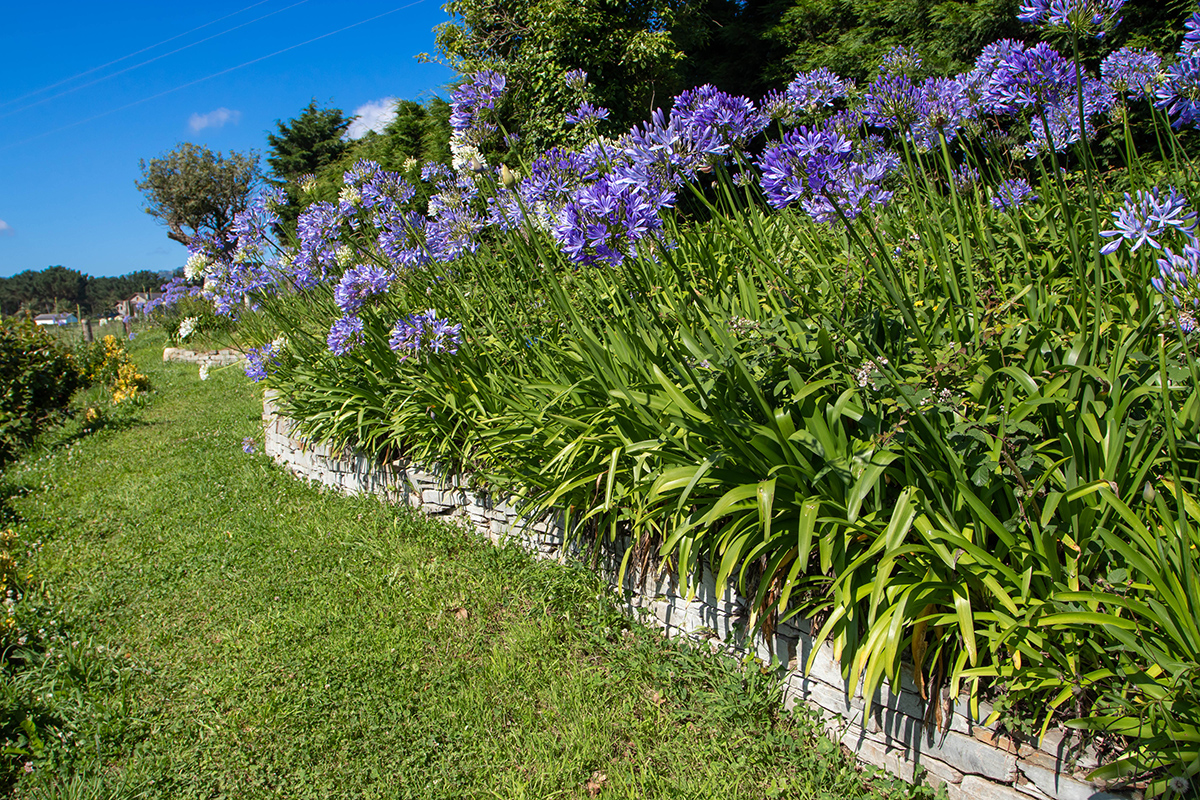Agapanthus Breeding: Tips for Expanding Your Plant Collection
Wiki Article
Mastering the Art of Agapanthus Treatment: Necessary Actions for Healthy Growth and Vibrant Flowers
In the realm of cultivation, the growing of agapanthus stands as a satisfying venture for those who seek to support these stylish flowering plants. From choosing the right selection to grasping pruning strategies, the trip towards cultivating flourishing agapanthus plants is complex and holds the key to opening the complete capacity of these organic gems.
Picking the Right Agapanthus Range

When choosing the ideal Agapanthus range for your garden, think about elements such as climate viability, blossom shade, and development habit. Agapanthus, frequently referred to as Lily of the Nile or African lily, can be found in a selection of colors varying from shades of blue and purple to white. Pick a flower shade that complements your existing garden scheme to create an unified landscape. Furthermore, think about the environment in your area to make sure the Agapanthus range you pick can grow in your specific problems. Some selections are more tolerant of chilly temperatures, while others choose warmer climates. Comprehending the development practice of various Agapanthus selections is critical for correct placement within your garden. Some ranges have a clumping growth habit, perfect for borders or containers, while others have an even more dispersing nature, ideal for ground cover or mass plantings. By carefully assessing these elements, you can select the excellent Agapanthus range to improve the beauty of your garden.
Suitable Growing Problems
Taking into consideration the optimum ecological demands is crucial for successful Agapanthus growing. Agapanthus plants are sensitive to cold temperatures and ought to be safeguarded from frost during winter months.To make sure healthy growth and lively blossoms, plant Agapanthus light bulbs at a depth of regarding 2-4 inches and room them 8-12 inches apart. Adding raw material, such as garden compost, to the soil can boost drainage and fertility, promoting robust origin advancement. Mulching around the base of the plants assists preserve dampness and reduces weed growth. Routine watering is vital, especially during the expanding period, to maintain the soil continually wet yet not saturated.
Watering and Feeding Tips
Preserving proper dampness degrees and offering crucial nutrients are vital aspects in the treatment program for Agapanthus plants. When it comes to watering Agapanthus, it is important to strike an equilibrium. These plants prefer consistently moist soil yet are vulnerable to root rot if overwatered.Fertilizing Agapanthus is vital for promoting healthy growth and prolific blooms. Apply a well balanced fertilizer, such as a 10-10-10 formula, in the early springtime as new development emerges. Repeat this application every 6-8 weeks throughout the expanding period. Avoid extreme fertilizing, as it can result in lush vegetation at the expense of flowers. Constantly comply with the manufacturer's directions for appropriate dilution and application methods. By following these watering and fertilizing ideas, you can ensure your Agapanthus plants thrive and create dynamic, lasting flowers.
Trimming Methods for Agapanthus
Trimming Agapanthus plants at the ideal times and with appropriate techniques is important for maintaining their wellness and advertising optimal development and blooming. The suitable time to prune Agapanthus remains in late winter or early spring before new browse this site development emerges. Start by eliminating any dead or yellowing fallen leaves near the base of the plant. Cut them as short as feasible without harming the arising shoots.For flowered stems, wait until the blooms have perished and after that trim them back to the base. This not only tidies up the plant's appearance try this yet likewise encourages the growth of new blossom buds. Deadheading invested blossoms can likewise redirect the plant's power into producing more flowers instead of establishing seeds. However, if you wish to accumulate seeds for breeding, leave some flowers to mature and dry on the plant.
Remember to make use of clean, sharp devices to make specific cuts and decrease the risk of presenting conditions. Agapanthus. Routine trimming will assist keep your Agapanthus looking healthy and balanced and neat while making certain an abundant display screen of gorgeous flowers
Handling Common Insects and Diseases
After making certain correct trimming methods for Agapanthus, it is important to deal with typical parasites and conditions that can influence the wellness and vigor of these plants. Agapanthus plants are typically sturdy but can still succumb to certain concerns. One typical insect that impacts Agapanthus is the Agapanthus gall midget. This small, orange fly lays its eggs in the foliage, causing distorted growth and blossom buds that fall short to open. To fight this parasite, prune and ruin any type of damaged plant components and think about using insecticidal soap.Additionally, Agapanthus plants can experience from root rot if they are planted in inadequately draining pipes soil. By being cautious and taking punctual action versus diseases and pests, you can help your Agapanthus plants flourish and produce dynamic flowers. Agapanthus.

Conclusion
Finally, mastering the art of agapanthus care includes selecting the ideal selection, giving optimal growing problems, appropriate watering and feeding, ideal trimming strategies, and addressing common bugs and conditions. By following these vital steps, you can guarantee healthy development and vibrant flowers for your agapanthus plants. Remember to regularly check and maintain your plants to advertise their general wellness and long life.To make sure healthy growth and vivid blooms, plant Agapanthus bulbs at a depth of concerning 2-4 inches and area them 8-12 inches apart. By complying with these watering and fertilizing pointers, you can guarantee your Agapanthus plants prosper and generate vivid, durable blossoms.
One usual parasite that influences Agapanthus is the Agapanthus gall midge. Additionally, Agapanthus plants can suffer from root rot if they are grown in badly draining pipes soil. By following these crucial steps, you can ensure healthy check out this site development and dynamic blooms for your agapanthus plants.
Report this wiki page